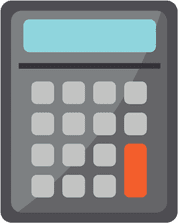Think you need cash to get in on a multifamily deal? Read on to find out what sources of capital you can use to invest in real estate syndications!
Don’t have money in the bank to invest in multifamily? Don’t count yourself out! There are several ways to access capital for real estate deals.
In this week’s video blog, we discuss the different money sources you can use to invest in real estate syndications!
We explore how to convert your stocks and bonds into cash for a multifamily deal and explain the pros and cons of opening a line of credit.
You’ll understand how to use a portion of your retirement account for passive investing and learn the difference between a Self-Directed IRA and the QRP trust!
Watch the video below (or keep reading).
Cash Savings
The easiest way to invest in real estate syndications is with cash. Of the possible sources of capital, it is the most liquid—meaning it is readily available and can be quickly wired to the syndicator you are working with.
Stocks & Bonds
Another source of funds for real estate syndications is stocks and bonds. You can sell a portion of your mutual funds or ETFs for cash and put that money in a multifamily deal.
Of course, you will have to call your broker and have a conversation about why you want to sell. And while I don’t recommend pulling ALL of the money from your current investments in stock and bonds, it makes a lot of sense to use a portion of it to add multifamily to your portfolio.
As I’ve said before, there is no better investment in the world than apartment buildings. Nothing else affords you the cash flow, above-average returns AND the extraordinary tax benefits of real estate syndications.
Lines of Credit
Yet another way to access funds involves opening a line of credit. If you have equity in your home, for example, you can get a loan at a relatively low interest rate and use that money to invest in real estate syndications.
Do be careful, though. It’s important that you invest in a multifamily deal with a fairly high return in order to bridge the gap.
Self-Directed IRA
If you have a retirement account, you can use a portion of that money to invest in real estate syndications too! Here’s how it works:
- Open an account with a self-directed IRA custodian.
- Write a letter to the administrator of your existing account, asking them to move a certain amount of money to the new self-directed IRA.
- When you’re ready to invest in a real estate syndication, instruct the custodian of your self-directed IRA to wire the money to the appropriate closing attorney.
- Congratulations, your self-directed IRA now holds a share in the LLC of that particular real estate syndication!
There are some limitations that come with investing through a self-directed IRA. The law requires you receive no direct or indirect benefit from the investment. In other words, you can’t touch the money and cash flow distribution checks must be deposited directly to the IRA.
QRP
The one problem with investing through a self-directed IRA? There’s a good chance you will get taxed on the money you earn from a real estate syndication. (To learn more about this, listen to my conversation with Damion Lupo on Episode 158 of The Apartment Building Investing Podcast.)
So, what’s the alternative? Well, there’s this little thing called the Qualified Retirement Plan or QRP—and it just happens to be exempt from the Unrelated Business Income Tax (UBIT) taxes IRA investors are subject to when an asset sells.
Full disclosure, it does cost more to set up a QRP trust up front, but it has benefits beyond avoiding the UBIT tax:
- You don’t need a custodian to sign your paperwork. You do that yourself!
- You can borrow up to $50K from the trust without penalty.
To learn more about how the QRP works, get a free copy of Damion’s book, How to Get Checkbook Control of Your 401(k) & IRA Money Now.
So, What’s Best?
If you have access to several different sources of capital, cash is best—simply because it’s the easiest to deploy.
Multifamily deals move quickly, and once an opportunity is announced, syndicators take investors on a first come, first served basis. If you have cash, you can get into a deal quickly and wire the money right away.
Investors using a self-directed IRA are at a slight disadvantage because it does take a few days to complete the paperwork and get your custodian to wire the money.
Conclusion
So, what are the different money sources you might use to invest in real estate syndications?
- Cash
- Stocks & Bonds
- Lines of Credit
- Self-Directed IRA
- QRP
Explore all the available options. Beyond cash savings, there are many different ways to invest in real estate syndications!
If you’re still unsure about investing in multifamily syndications, check out my special report called “What’s the Better Investment: The Stock Market or Real Estate”, and it might open your eyes about the true returns of the stock market and the absolutely amazing opportunity we have with real estate syndications.
If you’re ready to take the next step want to invest in one of our upcoming multifamily investment opportunities, please join our Nighthawk Investor Club. You’ll be asked to fill out a short questionnaire and schedule a phone call with our Nighthawk team so that we can get to know each other a bit more. We can then present you with an upcoming opportunity.
